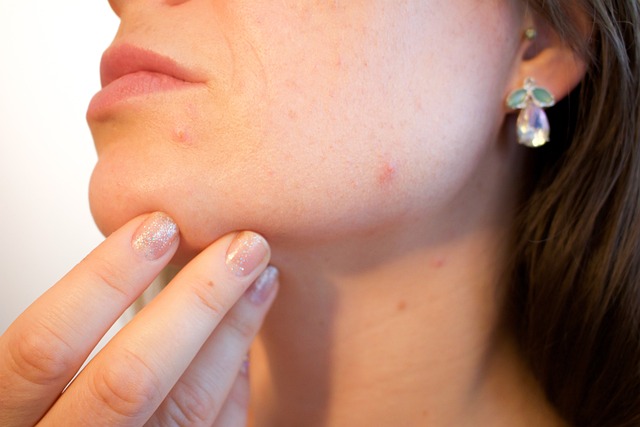ACEs can really get under your skin………..
Can ACEs really show on your skin?

I do like to look at all areas that impact us as ACE survivors , You might say that I don’t just like like to see things that are skin deep , except in this case ……( sorry I know that was awful)
Ive got to say that probably like many ACE survivors I have had my fair share of skin …, I want to say problems, but its more accurate to say skin irritations… Ive not really had a full blown breakout , but I have the odd patches of itchy redness that always knows the most embarrassing place to develop.
Do you ever get deja vu ? well I have it now , Ive written this before , in fact last night , missing a perfectly good episode of Witcher , I sat down to write this , I was really happy with it ,opened it up this morning to publish and ……..nothing ….it had gone with the wind. So I’m back in a coffee shop , overlooking the ruins of Tintern Abbey and here I go again……

I think we might want to get on the same page when we talk about skin . I have for many years thought of skin as a protective barrier , with a number of nerves, some hair and glands, a bit like a living waterproof coat .
But as usual I was mostly wrong , it is our body’s largest organ ( that always comes up in pub quiz nights,) it has , multiple neurological-immuno-endocrine functions and is in fact very complex. We know from school that the skin has layers and so I won’t bore you with knowledge you already have.
We could see the skin as similar in many respects to the HPA ( Hypothalamic-pituitary-adrenal ) axis. Studies have shown that skin has a localised response to stress (Slominski et al 2012) and is capable of releasing hormones in response to it and in some circumstances it can activate a systemic ( more than one organ) HPA response.
Wait a minute …whats the Neuro-Endocrine-Immune (NEI) organ then?
Ok I just slipped that in to make myself look smart until two days ago I had no idea myself , its really the fundamental link between our question of a link with ACEs ( adverse childhood experiences) and skin problems. Rather than thinking of the skin as an innate barrier like I did before , it’s better to think of the skin as a two way interlinked organ vital for keeping the homeostasis of the internal body.
If we take the Neuro from the threesome above first , we are talking about the skin communicating through its receptors and nerves .The endocrine is here because of hormones the skin both receives and synthesises hormones, the immune part is fairly self explanatory.
Yes , I know this is simplistic in its view, and for our purposes we had better delve a bit deeper ( see I didn’t use skin deep again …tempting though ). We might hear the word cutaneous , this just means ‘of the skin’ , so a neuro-immune-cultaneous-endocrine-network , really means just as the explanation above but with the added dimension, ‘of the skin’. Some might prefer to replace the ‘cutaneous’ with ‘organ’, though, as it has such close links with the central nervous system.
The skin has a closer than you’d think relationship with the brain , they both started off from the ectoderm ( one of the three primary germ layers , ectoderm or ‘outside the skin’ is also used to form the brain). The nerves found in the skin are made from different types of fibre , some myelinated ( remember from a previous post , these conduct signals faster ) and some not. Also found on these fibres are immune cells ( this gives a great indication of how these are all interlinked). So as you can imagine these two have a similar job of sensing..

The neuroimmune system or cell units, the two types from the previous sentence , work together to sense outside threats , the nerves might respond to heat, or a sharp objects and the immune cells to things like pathogens , infections . These cells communicate with the central nervous system or the immune system. These systems will respond in relation to the threat .
As we discussed above though , this communication can work both ways perhaps leading to inflammatory or immune responses. In fact Immune cells in the skin can not only start a localised inflammatory response , but they are capable of starting a system wide response through the release of a certain types of cytokines ( a type of small protein used in signalling) , immune cells in the skin can also effect lymph nodes. It is thought that this response may be connected to Psoriasis.
Now the last piece of the puzzle , the Endocrine bit………
We already have seen that the skin is a target for hormone releases from elsewhere in the body ,such as glucocorticoids ( a class of steroid hormones).However the skin can also synthesise its own hormones , such as the process that leads to the production of testosterone and its further conversion into a more potent form.
Above is a very simplistic view of the skin and its functions , for our purposes , we only need to know that its complicated and it has a strong connection with the rest of the body and that communication is bilateral . The reason we need to know this is , if we are to show that trauma can affect the skin , we can’t just say it does , we need to know a little about how it might do that, and knowing skin is not just a biological overcoat helps us in this.
it is thought that the skin can even communicate with itself , especially for defence or regeneration. Our skins as shown above are the interface between our internal and external environments . We rely on it to protect us from noxious incursion such as Uv radiation , chemicals or biological agents, it is also a major part of our sensory system , passing on vital changes in temperature , PH and inflammatory mediators (from the latin inflammare or “to Burn”) to the central nervous system, producing an organised and dynamic response by the body.

Obviously as we already know , stress can lead to the production of cortisol and adrenaline , the skin is a target organ form these hormones , we have all felt or seen the blood flow change then skin , have you ever blushed? , the skin is also affected by inflammation and immune responses .
Dr Claudia Aguirre Ph.D in neuroscience from USC , believes the skin has neuro -potential , that has not been recognised. She gives the example that skin has light receptors , we do not yet, know their function, , also that some skins hair follicles seem to have olfactory receptors ( smell) again we do not know why…. More from Claudia below .

Im going to jump right in with some more science , not from me obviously , but from the University of Medicine Malatya in Türkiye. Cancel et al 2023 , ” The relationship between stress and dermatological disease has been known for a long time “. ” chronic stress , especially in traumatic experiences in childhood……may lead to the development of dermatological disease similar to psychiatric and physical disease, by causing changes in a wide range of areas”. “The result ( of their research ) implies that traumatic childhood experiences may play an important role in both the severity and onset of dermatological disease”. They also confirmed that as a side result of their study they could confirm that childhood trauma is positively correlated with depression and anxiety .
Psychodermatology
Dr Aguirre Ph.D, states that here is an emerging new science called psychodermatology , this is the treatment of shin disorders using psychological or psychiatric techniques . It addresses the interaction between the mind and the skin, to reflect increasing evidence that behavioural treatments can be effective in skin disorders. This opens up new avenues she says for the treatment for many chronic skin conditions. Psychotherapy.net , August 2021 , shows that significant stress and anxiety has been reported in 44% of patients who suffer from Psoriasis and that figure goes up to 80% for eoccorance of the disorder. They state that if you looked at individuals suffering from psychiatric disorders more have skin problems , than those with psychiatric disorders and , heart issues , brain disorders or cancer combined.
Dermatology Times ( June 26 2019) shows that one third of all patients in dermatology have emotional disorders. They describe Psychodermatology as where the skin meets the mind. They site atopic dermatitis, acne, psoriasis ,dermatitis as conditions that seem to be worse under stress.

There are of course direct skin problems that are directly caused by problems such as skin picking , this or excoriation disorder sometimes starts with acne or conditions such as psoriasis ( skin cells overproduction) . One small survey of patients with excoriation disorder( ED) found that 47.5% had early onset ED…traumatic childhood events may initiate the behaviour ( from Lumenlearning.com , no other reference given).
We can feel ourselves how there is a link with the nervous system and the brain ,as receptors in the skin send sensory information to the brain , say for instance a sudden chill ( or that unexpected scene in a film ) and your nerves send information to your muscles to make the hair follicles on your skin stand up , or give you goosebumps!
The skin of course isn’t the only external protection of the body , think about your hair , your glands or your nails , we call these things together the integumentary system. These all work together and works directly with other systems in the body , such as the cardiovascular, urinary, digestive, respiratory nervous and Immune systems .
Is it all connected to trauma?
I can almost hear you asking over the world wide wait ( WWW.) why am I going off at a tangent again ? well its to show us how everything is connected , why shouldn’t childhood trauma that effects the central nervous system , the digestive system and the immune system not affect the skin when they are so closely connected?
Honestly , there is bits and pieces of knowledge out there , Ive tried to draw some of them together . There are many websites that just seem to claim the link , I haven’t mentioned them here as I only include those who are backed by solid peer reviewed research . On one site I visited as it advertised hair loss due to childhood trauma, but it took me to a hair loss lotion to buy!
I feel that there is more to know here, I feel there is a solid connection between toxic stress and skin conditions that have been caused by childhood trauma . I don’t feel that Ive shown enough evidence above to show that . I would like to find out if Epigenetic’s play a part here , a heightened alert state must have some effect on one of our main sensory organs , the skin , but who knows ? I could find nothing on it.
Im not too happy about this post , I couldn’t really show one way or another if childhood trauma effects the skin , I feel like we all know it does , but the balance of probabilities won’t work here , we need beyond reasonable doubt and I don’t think we proved that .
Thank you……
Thank you so much for spending time here , I know there is a lot of content out there … Ive fallen foul of Google , my quotes cannot be seen by the trawling bots of google so they think it’s a cut and paste and have removed me from the first few pages of a search enquiry . I have to re look at the whole of the website and use hyper link quotes or quote boxed instead …..AHHhhh. So next week Im going to sit back in a coffeeshop and get it done ……..if I can find out how! Ive gone from page three to ……page no one will ever find!
Hope I find you well , remember Im not a medical expert Im just a survivor of childhood trauma looking for answers and passing them on ……..
Citations
North Clin Istanb. 2023; 10(1): 79–86.
Published online 2023 Feb 20. doi: 10.14744/nci.2021.10170
PMCID: PMC9996659
PMID: 36910444
The role of childhood trauma in patients with chronic urticaria
Neslihan Cansel, 1 Dursun Turkmen, 2 and Nihal Altunisik 2
Author information Article notes Copyright and License information PMC Disclaimer
1Department of Psychiatry, Inonu University Faculty of Medicine, Malatya, Turkiye
2Department of Dermatology, Inonu University Faculty of Medicine, Malatya, Turkiye
Corresponding author.
Correspondence: Dursun Turkmen, MD. Inonu Universitesi Tip Fakultesi, Dermatoloji Anabilim Dali, Malatya, Turkiye. Tel: +90 530 223 69 55 e-mail: moc.liamg@44nemkrutnusrud
CME Article
Open Access
Skin and Psychosomatics – Psychodermatology today
Uwe Gieler, Tanja Gieler, Eva Milena Johanne Peters, Dennis Linder
First published: 30 November 2020
https://doi.org/10.1111/ddg.14328
Citations: 9
Published online 2022 May 12. doi: 10.3390/life12050725
PMCID: PMC9144330
PMID: 35629392
The Trinity of Skin: Skin Homeostasis as a Neuro–Endocrine–Immune Organ
Rong Jin,1 Lan Luo,2 and Jie Zheng1,*
Bernard Querleux, Academic Editor and Luis Monteiro Rodrigues, Academic Editor
Author information Article notes Copyright and License information PMC Disclaimer
Copyright © 2022 by the authors.
Licensee MDPI, Basel, Switzerland. This article is an open access article distributed under the terms and conditions of the Creative Commons Attribution (CC BY) license (https://creativecommons.org/licenses/by/4.0/).
Cite this article
Jameson, C., Boulton, K.A., Silove, N. et al. Ectodermal origins of the skin-brain axis: a novel model for the developing brain, inflammation, and neurodevelopmental conditions.Mol Psychiatry 28, 108–117 (2023). https://doi.org/10.1038/s41380-022-01829-8
- Received04 May 2022
- Revised16 September 2022
- Accepted03 October 2022
- Published25 October 2022
- Issue DateJanuary 2023
- DOIhttps://doi.org/10.1038/s41380-022-01829-8
full text links

actions
CiteCollections
share
page navigation
- Title & authors
- Abstract
- Similar articles
- Cited by
- Publication types
- MeSH terms
- Substances
- Related information
- LinkOut – more resources
Title & authors Abstract Similar articles Cited by Publication types MeSH terms Substances Related information LinkOut – more resources
ReviewClin Ther
. 2020 May;42(5):757-770.
doi: 10.1016/j.clinthera.2020.03.008.Epub 2020 Apr 7.
Stress-induced Interaction of Skin Immune Cells, Hormones, and Neurotransmitters
Nives Pondeljak 1, Liborija Lugović-Mihić 2
Affiliations collapse
Affiliations
- 1Department of Dermatovenereology, University Hospital Center Sestre Milosrdnice, Zagreb, Croatia.
- 2Department of Dermatovenereology, University Hospital Center Sestre Milosrdnice, Zagreb, Croatia. Electronic address: liborija@gmail.com.







